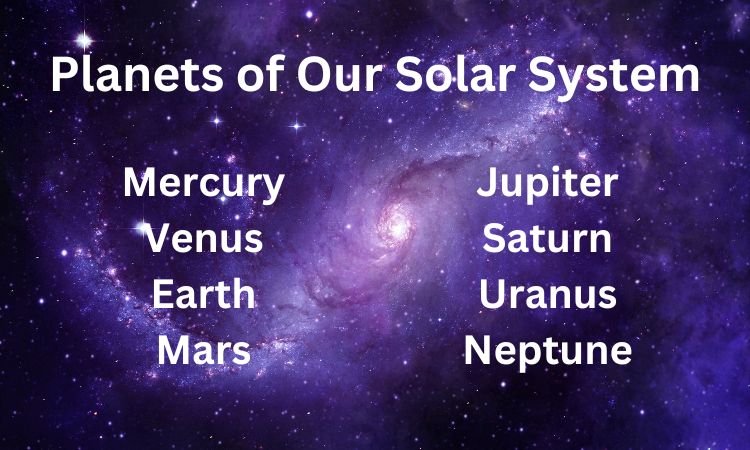Fascinating Facts About Our Solar System: Exploring the Wonders of Space
Our solar system is a captivating and diverse realm filled with celestial wonders. From the fiery Sun at its center to the myriad of planets, moons, asteroids, and comets, it offers a wealth of fascinating discoveries. In this article, we will delve into the intriguing facts about our solar system, uncovering its unique features, celestial bodies, and the remarkable journey of exploration. So, let’s embark on an astronomical adventure and uncover the wonders of our cosmic neighborhood.
Facts About Our Solar System Video
Welcome to the captivating world of “Facts About Our Solar System Video.” Embark on a visually stunning voyage through space as we unravel the astonishing wonders that make up our cosmic neighborhood.
Hope you have enjoyed the above video content on our solar system!
Let’s discuss some important facts about our solar system.
Watch Exciting Stories: KidzNCrew
The Solar System and Its Name
Let’s know why we call our solar system with this name.
- Our planetary system is named “the solar system” because we use the word “solar” to describe things related to our star, the Sun.
- The term “solar” originates from the Latin word “solis,” meaning Sun.
Size and Distance of Solar System
It’s important to know the size and distance if you’re knowing solar system in depth.
- The solar system extends beyond the eight planets, encompassing the Kuiper Belt, a ring of icy bodies located past Neptune’s orbit.
- The Kuiper Belt consists mostly of small objects, with the dwarf planet Pluto being the most famous member.
Also read: Facts About The Sun
The Oort Cloud
Here, you can explore more about the Oort Cloud:
- Beyond the Kuiper Belt lies the Oort Cloud, a massive spherical shell surrounding our solar system.
- The Oort Cloud is made up of icy pieces of space debris, some larger than mountains, and it extends up to 1.6 light-years away from the Sun.
- Although the Oort Cloud has never been directly observed, its existence is supported by mathematical models and observations of comets believed to originate from this region.
Planets in Our Solar System
There are 8 planets in our solar system:

1. Mercury: The closest planet to the Sun, Mercury is a hot and barren world with a rugged surface and extreme temperature variations.
2. Venus: Shrouded in a thick atmosphere, Venus is a scorching planet with a runaway greenhouse effect, making it the hottest planet in our solar system.
3. Earth: Our home planet, Earth is a unique oasis teeming with life, featuring vast oceans, diverse ecosystems, and a perfect balance of conditions for sustaining a wide variety of species.
4. Mars: Often called the “Red Planet,” Mars is a dusty and desolate world, with polar ice caps and a captivating history of potential past life and future exploration.
5. Jupiter: The largest planet in our solar system, Jupiter is a gas giant with a mesmerizing system of swirling storms, including its iconic Great Red Spot.
6. Saturn: Adorned with its magnificent rings, Saturn is a gas giant known for its striking beauty and fascinating moon system, including the intriguing moon Titan.
7. Uranus: Tilted on its side, Uranus is an ice giant characterized by its unique blue-green hue and a collection of icy rings and moons.
8. Neptune: The farthest known planet from the Sun, Neptune is a frigid and windy ice giant with a stunning deep blue coloration and a dynamic atmosphere featuring the fastest winds in our solar system.
Known Moons of Solar System
Facts about the Moons our solar system has:
- Our solar system is home to more than 200 known moons, with several awaiting confirmation of discovery.
- Mercury and Venus are the only planets without moons, while Jupiter and Saturn boast the highest counts of moons.
- The moons around Jupiter and Saturn resemble miniature versions of our solar system, with diverse sizes and characteristics.
- Pluto, a dwarf planet, has five moons, including Charon, a moon so large that it causes Pluto to wobble.
Also read: Facts About Mercury
Formation of Our Solar System
You won’t miss the opportunity to discover how our solar system formed.
- Our solar system formed approximately 4.5 billion years ago from a dense cloud of interstellar gas and dust.
- The collapse of this cloud, possibly triggered by a nearby supernova’s shockwave, resulted in the formation of a spinning disk called a solar nebula.
- Gravity caused the material in the core of the nebula to clump together, forming the Sun, which eventually accumulated over 99% of the available matter.
- The remaining material in the outer regions of the disk formed planets, dwarf planets, large moons, asteroids, comets, meteoroids, and small irregular moons.
Structure of Solar System
Let’s understand the structure of the solar system.
- The structure of our solar system is a result of its formation process and the distribution of materials.
- The innermost planets—Mercury, Venus, Earth, and Mars—are known as terrestrial planets, characterized by their solid, rocky surfaces.
- Moving outward, the gas and ice-rich materials settled in the outer regions, giving rise to the gas giants like Jupiter and Saturn, and the ice giants Uranus and Neptune.
Also read: Facts About Saturn
Intriguing Facts About Our Solar System
Some common facts for our solar system:
- Our solar system is just one among billions of planetary systems in the universe.
- Thousands of planetary systems have been discovered orbiting other stars in the Milky Way.
- Our solar system is a vast cosmic neighborhood, teeming with planets and celestial bodies, suggesting the potential for other life forms in the universe.
- The Milky Way, our home galaxy, contains hundreds of billions of stars, and it is one of an estimated 100 billion galaxies in the universe.
Top 10 FAQs About Our Solar System
Here, you will learn the ten frequently asked questions on our magical solar system.
1. Which is the biggest planet in our solar system?
Ans. The largest planet in our solar system is Jupiter. It is a gas giant with a diameter of about 143,000 kilometers (88,800 miles), which makes it more than 11 times the diameter of Earth. Jupiter is known for its iconic Great Red Spot, a massive storm system that has been observed for over 300 years.
2. Which is the hottest planet in our solar system?
Ans. The hottest planet in our solar system is Venus. Despite not being the closest planet to the Sun (Mercury holds that title), Venus experiences extreme temperatures due to its thick atmosphere and greenhouse effect.
The average surface temperature on Venus is about 462 degrees Celsius (864 degrees Fahrenheit), which is hotter than the surface of Mercury, despite Venus being farther from the Sun.
The dense atmosphere traps heat and creates a runaway greenhouse effect, leading to the scorching temperatures on the planet.
3. Which is the smallest planet in our solar system?
Ans. The smallest planet in our solar system is Mercury. Mercury is a rocky planet and the closest planet to the Sun. It has a diameter of about 4,879 kilometers (3,032 miles), which makes it slightly larger than Earth’s Moon.
Despite its small size, Mercury has a relatively high density, which suggests a large metallic core compared to its thin rocky mantle. Its proximity to the Sun means that it experiences extreme temperature variations, ranging from scorching hot during the day to extremely cold at night.
4. Which is the coldest planet in our solar system?
Ans. The coldest planet in our solar system is Neptune. Neptune is the eighth and farthest known planet from the Sun. It is an ice giant composed mostly of hydrogen, helium, and traces of methane. The average temperature on Neptune is about -214 degrees Celsius (-353 degrees Fahrenheit).
The extreme cold temperatures on Neptune are primarily due to its distance from the Sun and its atmosphere, which contains high concentrations of methane that can trap heat and contribute to the frigid conditions.
5. Which is the brightest planet in our solar system?
The brightest planet in our solar system is Venus. Venus is often referred to as the “Evening Star” or the “Morning Star” because it is one of the most prominent objects in the night sky after the Moon. Venus appears exceptionally bright due to several factors.
First, it is relatively close to Earth, which allows it to reflect a significant amount of sunlight. Second, Venus has a highly reflective cloud cover composed of sulfuric acid, which further enhances its brightness.
Finally, Venus’ thick atmosphere and its position as the second planet from the Sun contribute to its brightness as it reflects and scatters sunlight effectively.
6. Which planet has the most moons in our solar system?
Saturn has the most moons in our solar system, with over 80 known moons.
7. Which planet has the shortest day?
Jupiter has the shortest day in our solar system, with a rotation period of about 9.9 Earth hours.
8. What is the most distant planet from the Sun in our solar system?
The most distant planet from the Sun in our solar system is Neptune, which is located about 4.5 billion kilometers (2.8 billion miles) away from the Sun on average.
9. Which planet has the most prominent ring system?
Saturn has the most prominent and well-known ring system in our solar system. It consists of several distinct rings made up of countless small particles of ice and rock.
10. What is the largest volcano in our solar system?
Olympus Mons on Mars is the largest volcano in our solar system. It is about 22 kilometers (13.6 miles) high, making it nearly three times the height of Mount Everest.
11. Which planet experiences the strongest winds in our solar system?
Neptune has the strongest winds in our solar system, with gusts reaching speeds of up to 2,100 kilometers per hour (1,300 miles per hour).
12. What is the hottest moon in our solar system?
Io, one of Jupiter’s moons, is the hottest moon in our solar system due to its intense volcanic activity, which generates significant heat.
13. Which planet has the most prominent set of rings after Saturn?
Uranus has a unique set of rings, although they are not as visually striking as Saturn’s rings. Uranus’ rings were discovered in 1977 and are composed of dark particles.
14. Which planet has the highest average surface temperature?
Venus has the highest average surface temperature among the planets in our solar system, with an average temperature of around 462 degrees Celsius (864 degrees Fahrenheit) due to its thick atmosphere and greenhouse effect.
15. What is the largest moon in our solar system?
Ganymede, one of Jupiter’s moons, is the largest moon in our solar system. It is even larger than the planet Mercury.
16. Which planet has the largest and most intense storm system in our solar system?
Jupiter has the largest and most intense storm system known as the Great Red Spot, which has been observed for centuries. It is a persistent anticyclonic storm that is larger than Earth.
17. What is the largest asteroid in our solar system?
The largest asteroid in our solar system is Ceres. It is located in the asteroid belt between Mars and Jupiter and has a diameter of about 940 kilometers (590 miles). In fact, Ceres is so large that it is considered a dwarf planet.
18. What is the closest planet to Earth?
The closest planet to Earth is Venus. Due to its proximity and similar size to Earth, Venus is often called Earth’s “sister planet.”
19. Which planet has the most eccentric orbit in our solar system?
Pluto, although reclassified as a dwarf planet, has the most eccentric orbit among the recognized planets and dwarf planets. Its orbit is highly elliptical, taking it closer to the Sun than Neptune for a portion of its orbit.
20. Which planet has the most complex system of rings?
Saturn has the most complex and well-developed system of rings in our solar system. Its rings consist of numerous individual ringlets made up of ice particles ranging in size from tiny grains to large chunks.
Some Other Amazing Fatcs
Final Thought
The solar system is a captivating realm that offers a glimpse into the vastness and diversity of the universe. From the planets orbiting our Sun to the countless moons, asteroids, and comets, our cosmic neighborhood is filled with wonders waiting to be explored.
As we continue to unveil the secrets of space, the solar system serves as a testament to the infinite possibilities and mysteries that lie beyond our planet’s boundaries.
Hope you find this article worth, for more such information, you can visit “Amazing Facts“.
Search
Recent Posts
- छोटे बच्चों की कहानी (Chote Baccho Ki Kahani in Hindi)
- Chandrayaan 3 Quiz Questions and Answers
- The Cat and Mouse Story
- चुहे और बिल्ली की कहानी (Chuhe Aur Billi Ki Kahani)
- Jack and Jill Nursery Rhyme for Kids
- Hokey Pokey Nursery Rhyme for Kids
- Why Do Cats Cry at Night?
- Twinkle, Twinkle, Little Star – Nursery Rhyme for Kids




